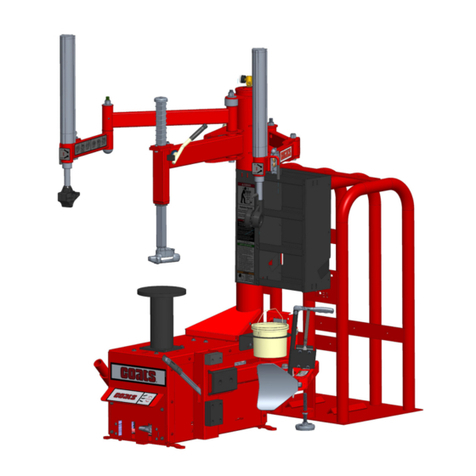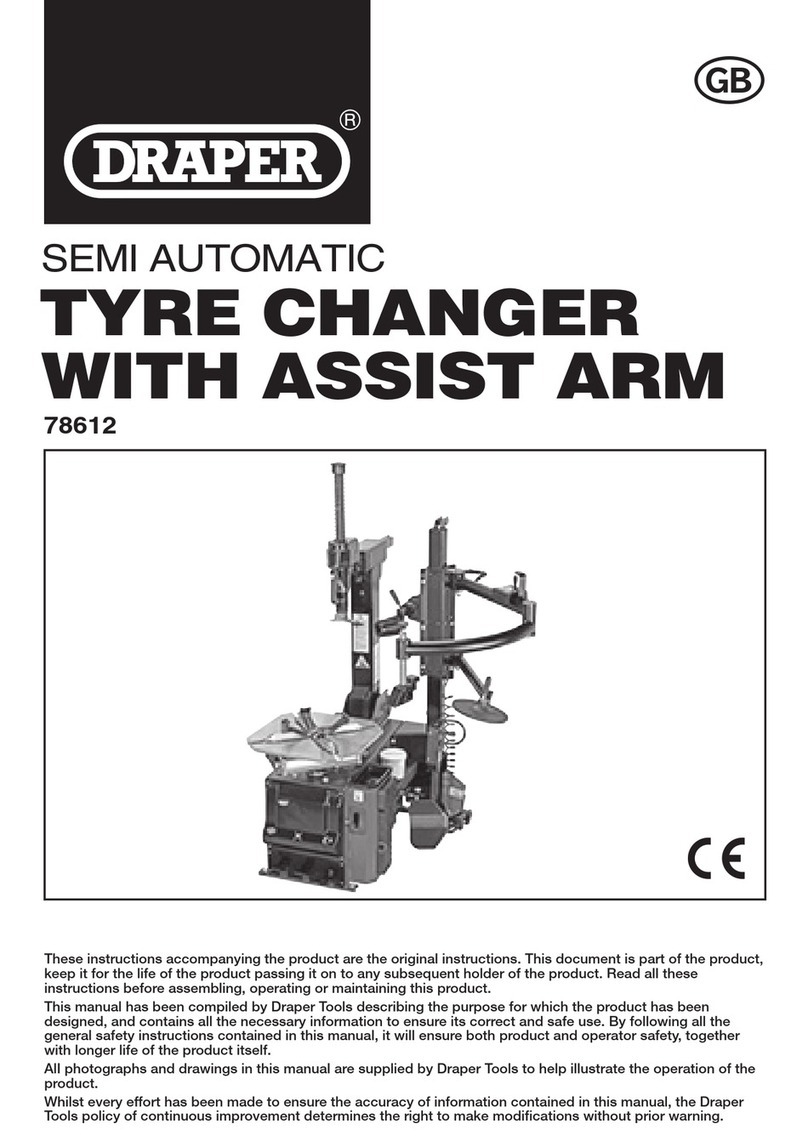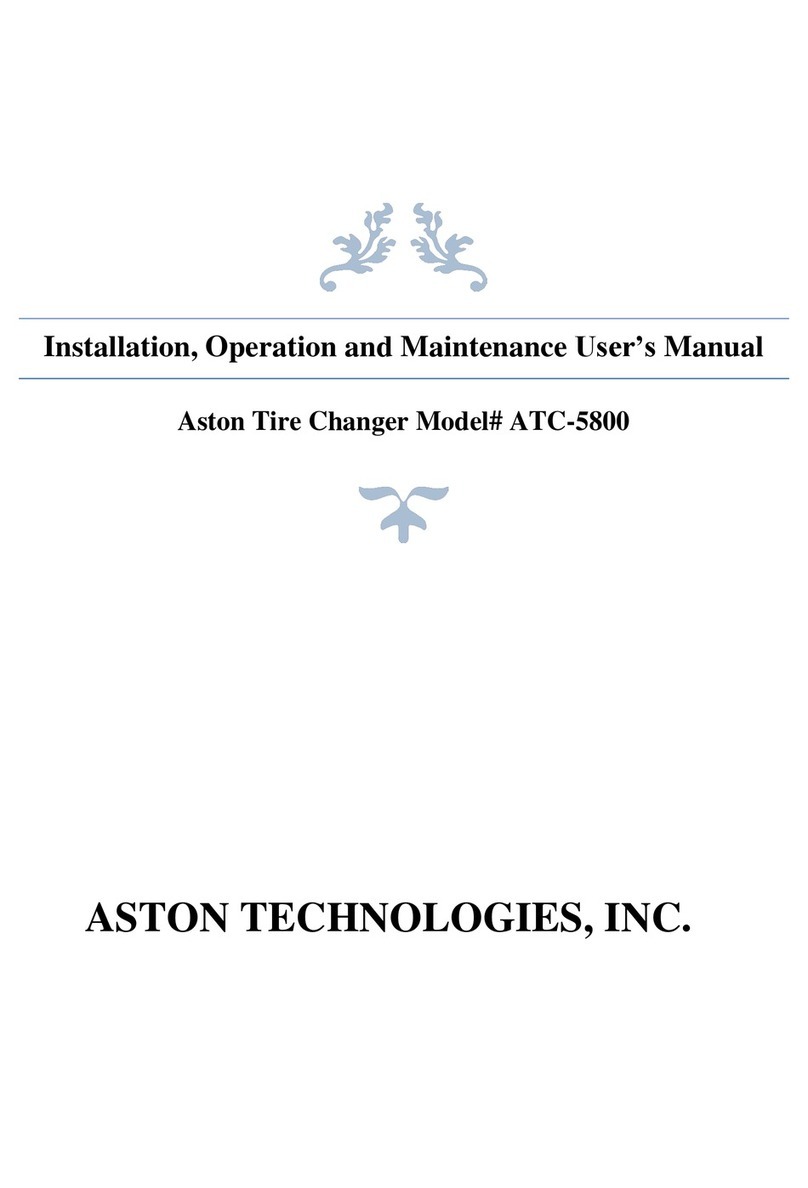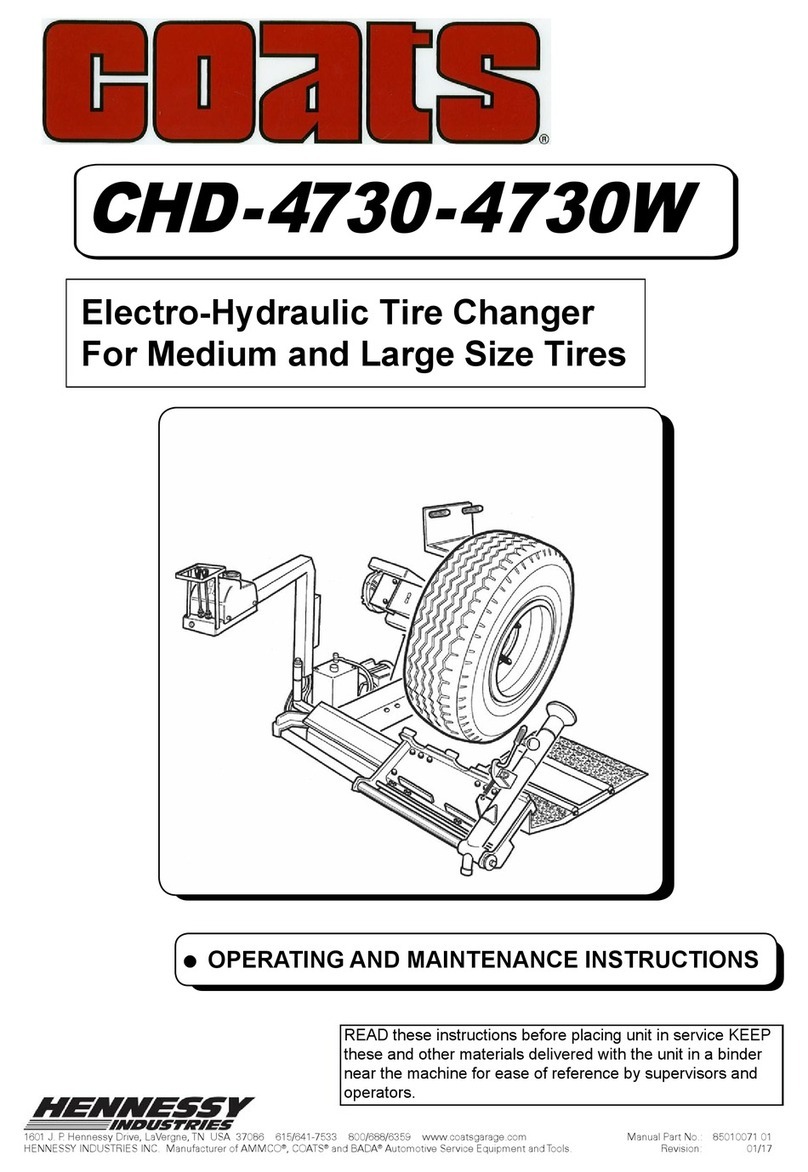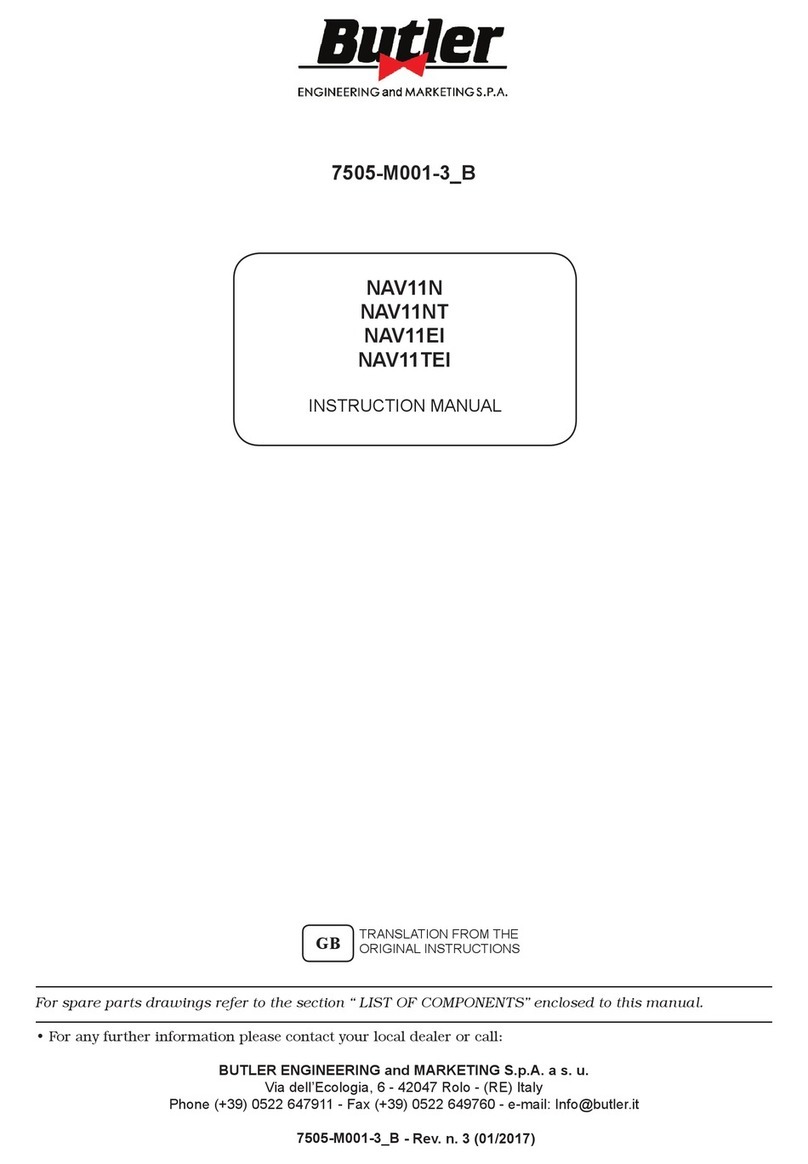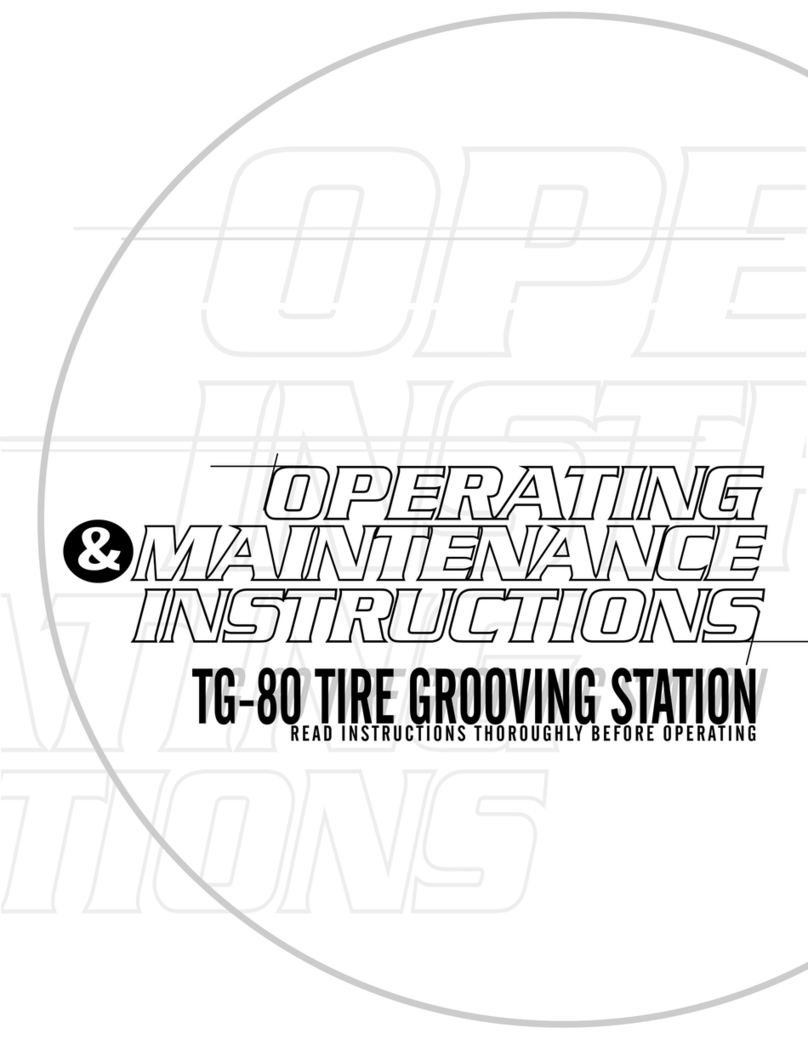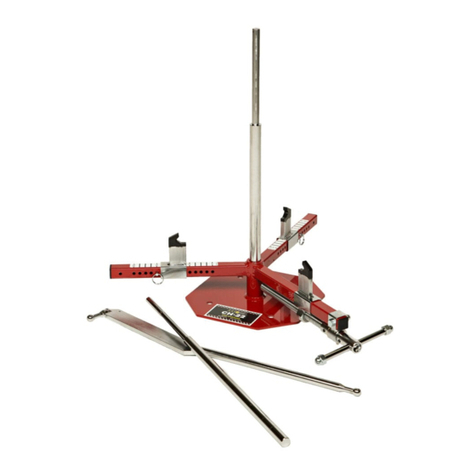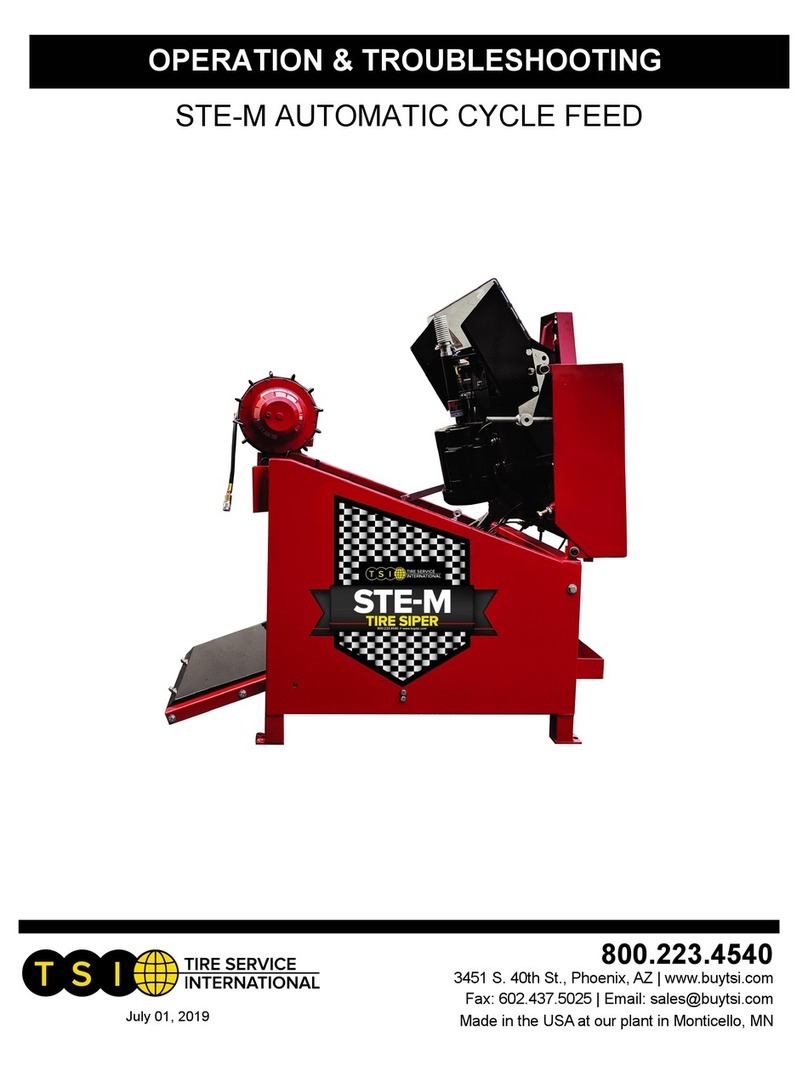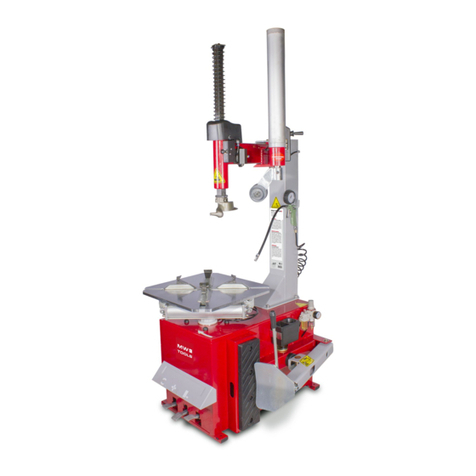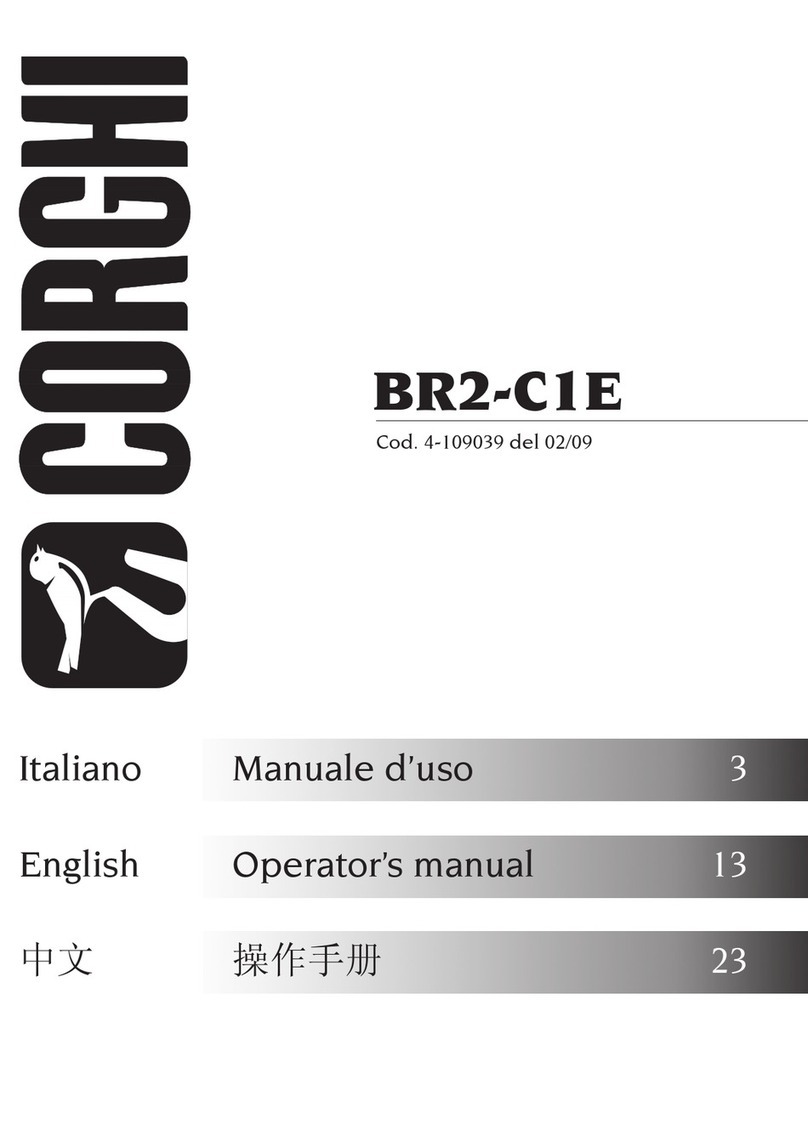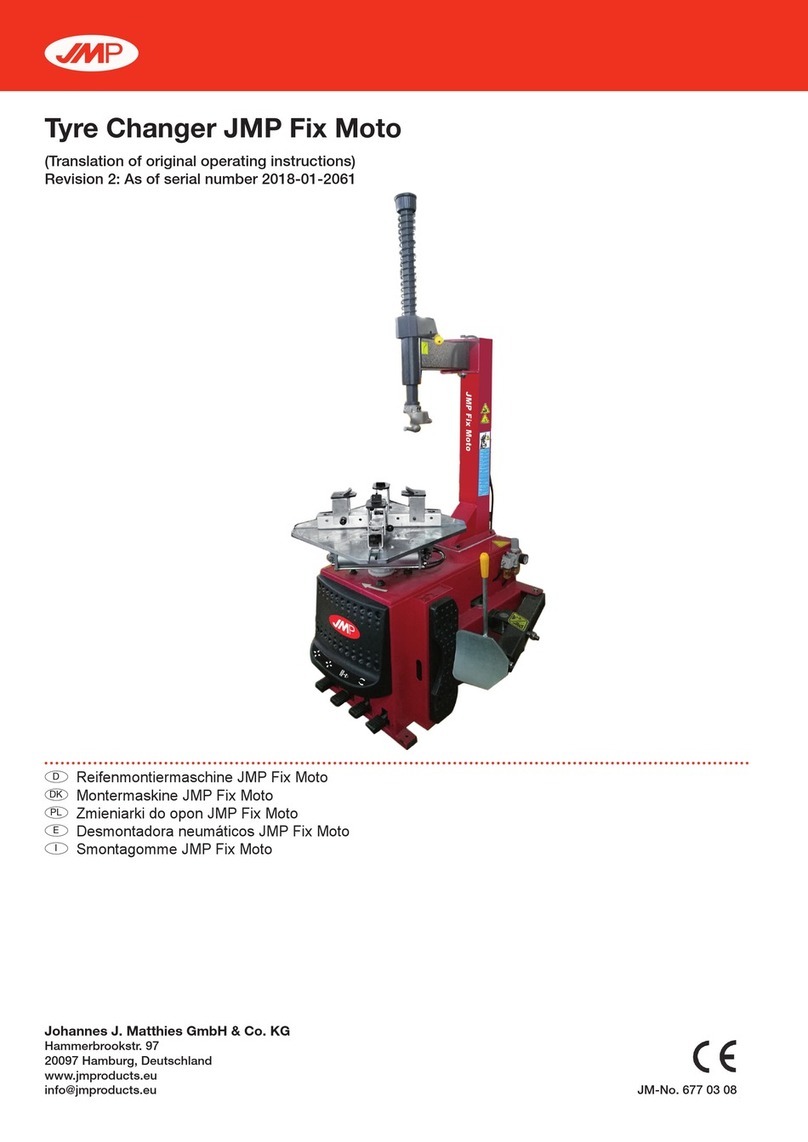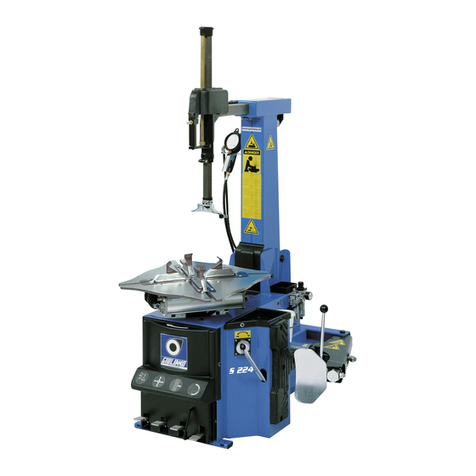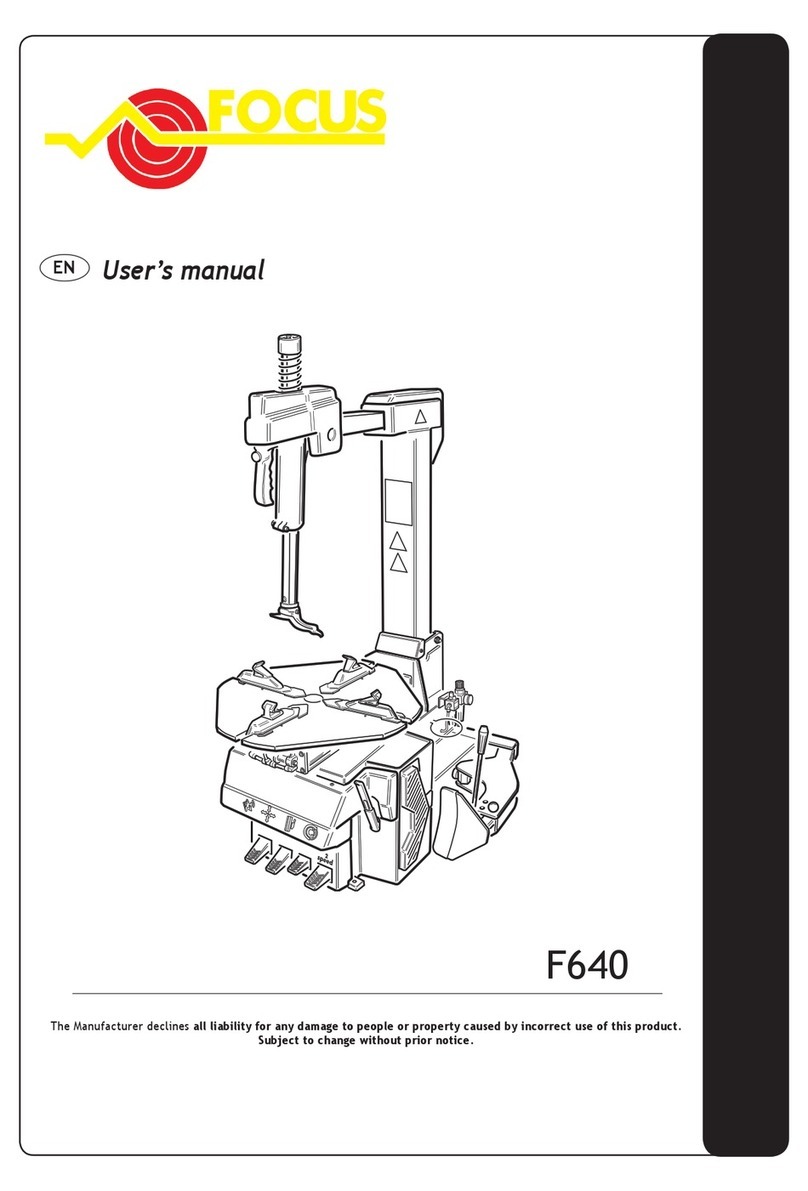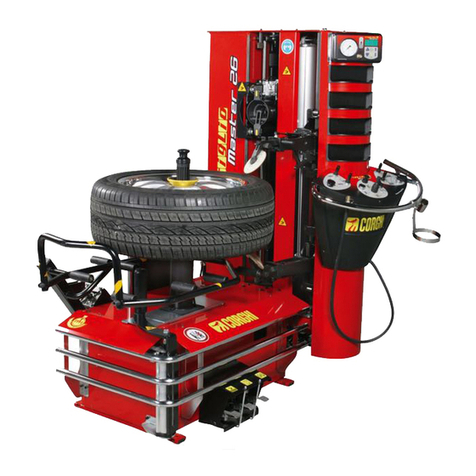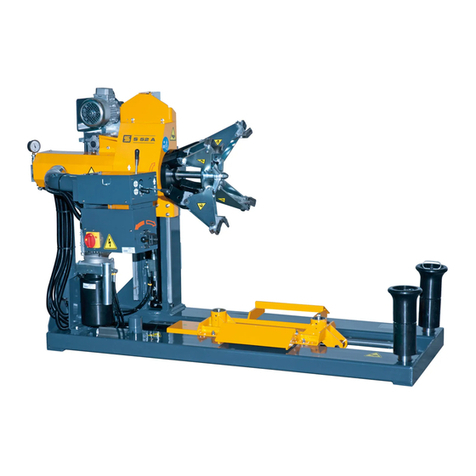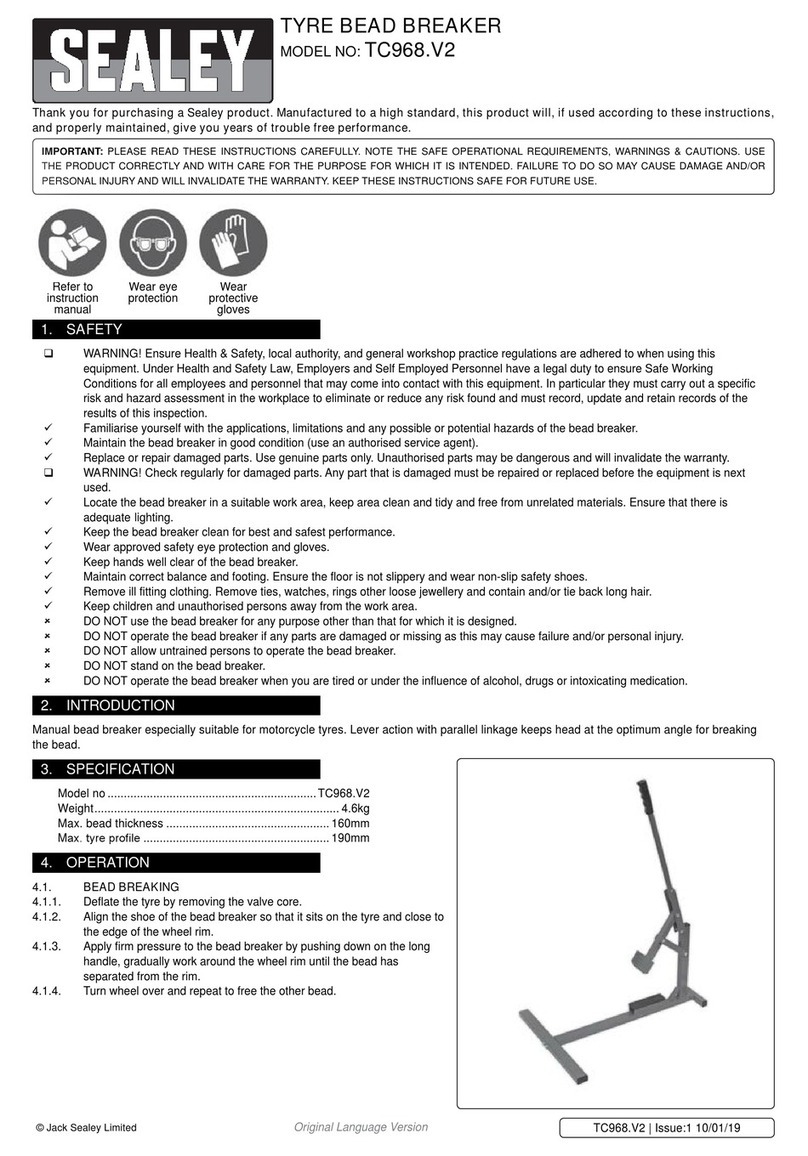
TIRE SIPING MACHINE
SET UP - BASIC REQUIREMENTS
SECTION TWO
You will need an air supply that can supply 90 PSI of air
and access to an electrical power source with at least a 30
AMP rating. For your air connection, a male couple will be
needed and make sure to have some Teflon tape to help
seal the connection airtight. Finally, you will need some
chalk to make marks on the tires you are going to sipe.
Operate the unit on a clean, level, non-slip surface. The
approximate work area should measure at least 3 feet
from the foot print of the machine, this distance is the
minimum recommended for non-operators in proximity to
the machine. The machine's foot print of 66"L X 48" W x
50" H. The shipping weight is 1050 lbs.
To transport the machine ensure the hood is down, the
hub is in its stored position and the lock pin on the hub is
in place.
LUBRICATION
To gain access to the
inside of your siper
move the wheel mount
assembly from its
operational position on
the side of the siper
To cool the cutting
blade and lubricate the
tire, mix 1 part silicone
lubricant (part# 2.029)
to 16 parts water and fill
the mist unit supply
container. Insert hose
and secure. Engage the
mister at the time of
engaging the blade on
the tire.
POWER CORD
Extend the power cord out
the back of the cabinet to
prevent it from being dam-
aged by the stops on the
hood. Position cord away
from walkways, a nylon tied
down may help to keep
excess cord away from walk
ways to prevent trip hazards.
If you need to use an extension cord, it needs
to be a heavy-duty extension cord, use a
heavy-duty 30 amp power strip to plug into.
DO NOT plug the siper in until you are ready
to sipe.
AIR SUPPLY
Install correct air hose fitting.
(See arrow.) Use Teflon tape to prevent air leakage. Use
correct size wrenches if available to grip fittings properly
when tightening. The moisture trap has a view glass.
Set the air regulator to 90 PSI.
Remember to wear recommend PPE
(Personal Protective Equipment)
when working with the siper.
The drip pan should be installed to collect any run-off
lubricant. All lubricant run off, rags and materials should be
disposed of according to local environmental regulations.
Please see the appendix or our website for the Material
Safety Data Sheet (MSDS) on the siper lubricant.
Proper Personal Protection Equipment for the operation and
maintenance of this machine includes gloves, eye, ear,
inhalation, and foot protection. The A-Weighted Sound
Pressure Level at work station measured at 79.8 dB(A).
